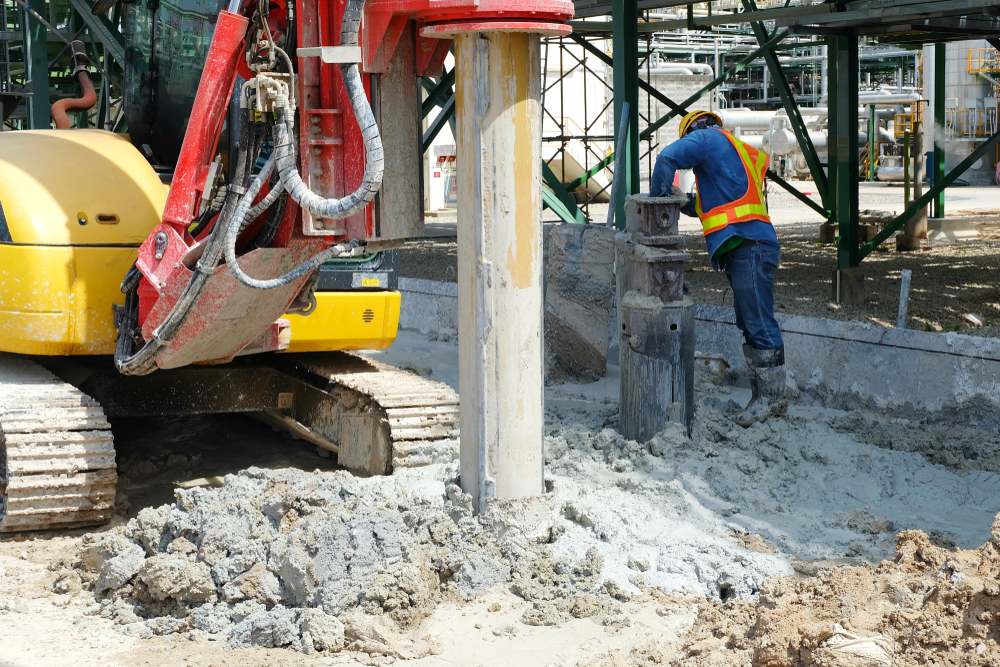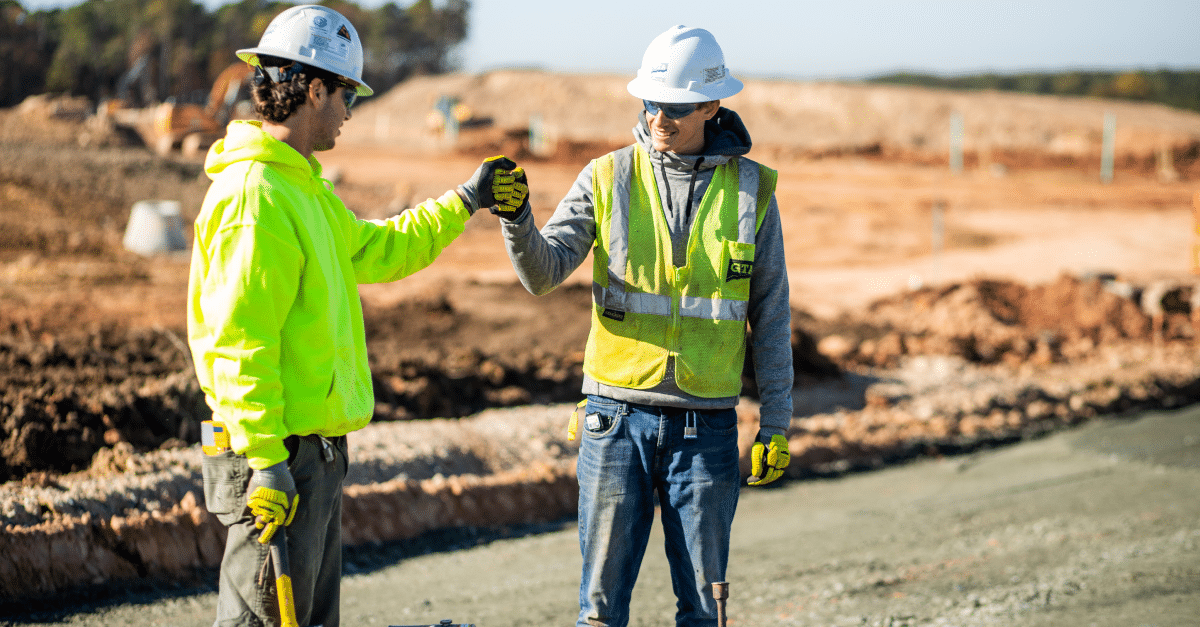The 20-Second Trick For Geotechnical Engineering For Construction Projects
The 20-Second Trick For Geotechnical Engineering For Construction Projects
Blog Article
Fascination About Geotechnical Engineering For Construction Projects
Table of ContentsThe Only Guide to Geotechnical Engineering For Construction ProjectsGetting My Geotechnical Engineering For Construction Projects To WorkUnknown Facts About Geotechnical Engineering For Construction ProjectsThe Basic Principles Of Geotechnical Engineering For Construction Projects An Unbiased View of Geotechnical Engineering For Construction ProjectsGeotechnical Engineering For Construction Projects Fundamentals ExplainedGeotechnical Engineering For Construction Projects - An Overview
and Kovacs, W. (1981 ), An Intro to Geotechnical Engineering, Prentice-Hall, Inc. Deep Check Tech (2023 ): Deep Scan Technology reveals covert structures at the website of Denmark's highest structure. "Geofrost Coring". GEOFROST. Retrieved 20 November 2020. Han, Jie (2015 ). Principles and Technique of Ground Renovation. Wiley. ISBN 9781118421307. RAJU, V. R.Ground Enhancement Technologies and Situation Histories. Singapore: Research Publishing Providers. p. 809. ISBN978-981-08-3124-0. Ground Improvement Principles And Applications In Asia. Pariseau, William G. (2011 ). Layout evaluation in rock technicians. CRC Press. Hegde, A.M. and Palsule P (Geotechnical Engineering for Construction Projects).S. (2020 ), Efficiency of Geosynthetics Reinforced Subgrade Subjected to Repetitive Lorry Loads: Speculative and Numerical Studies.
Cengage Discovering, Stamford, 666 p. Atkinson, J., 2007. The technicians of soils and foundations. The Observational Approach in ground engineering principles and applications.
The smart Trick of Geotechnical Engineering For Construction Projects That Nobody is Talking About
Lab and field testing plays a vital function in this procedure. By removing samples from the earth's subsurface and applying a suite of examinations, geotechnical engineers can anticipate the practices of soil layers and evaluate their suitability for different building efforts. The essence of geotechnical design in civil engineering can not be overstated, attributable to numerous aspects: The initial action in any kind of geotechnical study includes determining the soil kind at the building website.
The structure acts as the bedrock of any kind of construction task. Picking the ideal foundation type is a decision that hinges on the comprehensive analysis given by geotechnical design.

Geotechnical site investigation is a critical step in the preparation and implementation of any type of building task. It involves the collection and evaluation of information connected to the physical properties of dirt and rock under a recommended building website. This information is essential for the layout and construction of safe, secure, and lasting frameworks.
Get This Report on Geotechnical Engineering For Construction Projects
, also understood as subsurface expedition, entails a series of activities aimed at determining the soil, rock, and groundwater problems at a building and construction website. The primary goals are to identify prospective geotechnical risks, assess the design residential properties of subsurface materials, and provide recommendations for the design and building of structures, preserving wall surfaces, and various other structures.
This might consist of geological maps, aerial photographs, previous examination reports, and historic data. The desk research study aids in recognizing possible geotechnical problems and intending the subsequent fieldwork. Following the desk study, a site reconnaissance is carried out to visually evaluate the website and its surroundings. This includes observing the topography, drain patterns, existing frameworks, greenery, and any type of indicators of instability or disintegration.
More About Geotechnical Engineering For Construction Projects
Superficial examination pits are dug deep into to straight observe and sample the dirt and rock. This approach works for researching the top layers of the subsurface and identifying near-surface risks. Non-invasive geophysical approaches, such as seismic refraction, ground-penetrating radar (GPR), and electrical resistivity tomography (ERT), are utilized to map subsurface problems and identify abnormalities.
Dirt and rock samples accumulated throughout the area investigation are subjected to research laboratory screening to establish their physical and mechanical buildings. These tests supply essential information for geotechnical evaluation and layout.
The main advantage of geotechnical site examination is making sure the safety and security of structures. By understanding the subsurface problems, engineers can design foundations and other structural aspects that can endure the lots and ecological pressures they will certainly undergo. This decreases the danger of negotiation, decrease, and structural failing.
Excitement About Geotechnical Engineering For Construction Projects
Comprehending soil characteristics can lead the option of excavation methods, dewatering methods, and ground renovation measures. This makes sure reliable and secure construction methods. Geotechnical website investigations are commonly required by constructing codes and guidelines. Following these needs makes certain compliance with lawful and security requirements, preventing prospective lawful obligations and job hold-ups.
This info is invaluable for task supervisors, engineers, and specialists in establishing realistic schedules, budget plans, and backup strategies. Geotechnical Engineering for Construction Projects. High-Rise Structure in a Coastal AreaIn a seaside city, a skyscraper property building was intended on a website with suspected loosened sand down payments and a high water table. A detailed visit the site geotechnical examination, including borehole drilling, CPT, and geophysical surveys, was conducted
Geotechnical Engineering For Construction Projects Fundamentals Explained
Based upon these searchings for, the structure layout was customized to consist of deep stack foundations prolonging into stable strata, and ground improvement methods, such as vibro-compaction, were applied to reduce liquefaction dangers. This aggressive strategy guaranteed the security and security of the structure while avoiding pricey post-construction removal. Framework Growth on a Sloping TerrainA major framework job, entailing the building of a freeway and bridges, was intended on a sloping surface with high slopes.

The Leaning Tower of Pisa (Italy), a renowned building marvel, is infamous for its unintended tilt from considerable geotechnical problems. The tower's structure was inadequately developed to take care of the soft, unsteady soil underneath it, resulting in unequal settlement and its distinct lean. Our globe is dotted with remarkable framework projectsfrom towering high-rise buildings to sprawling bridgesall standing testament to the advancement of the different building and construction devices and approaches offered.
Geotechnical engineering is a specific area within civil design that focuses on examining the behavior of planet materials. This branch dives deep into the groundinvestigating exactly how the soil, rock, and groundwater at a building and construction website can influenceand be affected bythe framework that we put up on and into them. Prior to a solitary block is laid or a concrete structure put, geotechnical designers probe right into the earthgathering vital information about the site's soil make-up, rock framework, and groundwater degrees.
Geotechnical Engineering For Construction Projects for Dummies

is a tool utilized to evaluate the integrity and load-bearing capacity of piles throughout installment, leveraging the principle of wave proliferation. It enhances construction effectiveness by providing real-time analyses, therefore making certain secure and efficient pile foundations. One of the useful applications of geotechnical engineering entails choosing and performing the ideal methods for structure building and construction.
Stack driving represents more than the plain act of placing architectural why not look here aspects right into the ground. On the contrary, it is a meticulously managed procedure of moving a framework's lots click this site past the much less secure soil layers more detailed to the surfacedown to the more considerable strata that exist below. When it comes to stack driving, consider just how geotechnical engineers adeptly use this strategy to evenly disperse the structure's weight.
Report this page